Breadcrumb
This resource is part of:
Race: The Power of an Illusion (The Story We Tell)
Video Length
57:02Subject
- History
- Social Studies
Language
English — USUpdated
Race: The Power of an Illusion (The Story We Tell)

Major funding for this program provided by the Ford Foundation, a resource for innovative people and institutions worldwide, and the Corporation for Public Broadcasting. Additional funding provided by these funders.
[MUSIC PLAYING]
All men are created equal. All men are created equal. It's the lofty and revolutionary ideal at America's core. Yet, it was written at a time when some inhabitants were held in bondage and others were being dispossessed of their lands. How did American society justify unequal treatment based on skin color and national origins? How did it reconcile that contradiction? America created a story-- a story of race.
Race was never just a matter of how you look. It's about how people assign meaning to how you look.
We have the idea that it's somewhere written in stone that there are these fundamental differences between human beings. We don't realize that race is an idea that evolves over time, that it has a history, that it is constructed by a society to further certain political and economic goals.
Created over four centuries, race has become a powerful and enduring narrative. Moments in America's past reveal how this idea took hold and became the lens through which we view our world.
Thomas Jefferson, a Virginia slaveholder, penned the revolutionary words proclaiming human equality in the Declaration of Independence. He also wrote a lesser-known influential document, Notes on the State of Virginia. Written in response to questions from France about the American colonies, the book reads as a kind of sales pitch for America. Notes on the State of Virginia was not about race, but among Jefferson's descriptions of rivers and seaports, mountains and climate, he expressed his views on the inhabitants of the new land-- people from America, Europe, and Africa.
I advance it as a suspicion only, that the blacks, whether originally a distinct race, or made distinct by time and circumstances, are inferior to the whites in the endowments both of body and mind.
It is possible to make the argument that Thomas Jefferson is the first person to truly articulate a theory of race in the United States. And in effect, he has to do so. He has said in the Declaration of Independence that we are all created equal. Well, if in fact we're all created equal and if in fact we're entitled to our liberty, then how can he possibly own 175 slaves and going up to about 225 slaves at the peak of his slave-holding?
[MUSIC PLAYING]
In Notes, Jefferson's words appeared to justify slavery at a time when many were admonishing the Founding Fathers for espousing freedom while continuing to support a system of human bondage.
The problem that they had to figure out is how can we promote liberty, freedom, democracy on the one hand and a system of slavery and exploitation of peoples who are nonwhite on the other?
And the way you do that is to say, yeah, but you know there's something different about these people. This whole business of inalienable rights-- that's fine, but it only applies to certain people.
The moment when we become a nation is critical for our understanding of both American nationality and race. We accept the notion that all men are created equal, but then perhaps some of those people who are enslaved are not quite men. That is, we'll keep our ideas of American nationality, but we'll write certain people out of the human family.
[MUSIC PLAYING]
The suspicions of black racial inferiority raised by Jefferson had evolved over time, shaped in part by an intense need for labor in the American colonies. In 1619, when the first Africans arrived in Virginia, religion and wealth, not physical appearance, defined status. Blackness and whiteness were not yet clear categories of identity.
They were more likely to distinguish between Christians and heathens than they were between people of color and people who were white. They regarded a person's status in life as somehow more fundamental than what color they were or what their particular background was.
The different ways in which those hierarchies of social class and social power became filled in with the content of race, so that the lowest class would be a black class and the highest class would be some particularly pale white class, that was a very gradual process.
For the first 50 years in the American colonies, most of the laborers were European indentured servants, many toiling on tobacco plantations in wretched conditions. With fewer Europeans braving the treacherous journey across the Atlantic, planters facing a potential labor shortage turned to the transatlantic slave trade and gradually replaced indentured servants with African slaves.
They found what they considered an endless labor supply. People who could be readily identified and so when they ran away they couldn't just meld into the population like Native Americans could. People who knew how to grow tobacco. People who knew how to grow rice. From their standpoint, the ideal labor source.
Colony by colony, new laws made slavery permanent and inheritable for black people. And for the first time, the word white rather than Christian or Englishman began appearing in colonial statutes.
To what extent you could say this was actually conscious strategy or what extent it was a result of a number of unthinking decisions that resulted in this, but it did buttress a kind of social structure.
As African slavery increased, lower class Europeans won new rights and opportunities. Some even became overseers and bounty hunters responsible for policing the growing slave population.
The ordinary white people are not going to be complicit in the system unless they get something out of it. My belief is that payoff was in a certain status, prestige, recognition, ego enhancement that ordinary white people could derive from racism. And so there was a kind of bargain struck.
Many of the European-descended poor whites began to identify themselves if not directly with the rich whites, certainly with being white. And here you get the emergence of this idea of a white race as a way to distinguish themselves from those dark-skinned people who they associate with perpetual slavery.
Slavery became identified with Africans. Blackness and slavery went together. They gave the white American the idea that Africans were a different kind of people.
There's a racial divide emerging that people begin to see as natural. And that's part of where the idea of race comes from is just in the tendency for people to see existing power relationships as having some sort of natural quality to them.
By the time Jefferson sat down to write Notes on the State of Virginia in 1781, a plantation economy dependent on slavery was deeply entrenched. Slavery had become so widespread that to many whites it seemed the natural state for black people. But when Jefferson turned his attention to Indians in Notes, what appeared natural about them was their status as a free people. Brave warriors protecting their lands. This led Jefferson to suspect that Indians were not much different from Europeans.
Their vivacity and activity of mind is equal to ours in the same situation. We shall probably find that they are formed in mind as well as in body on the same module with the Homo sapiens europaeus.
The original view of the Indians was that they were naturally white people and they looked slightly brown because of exposure to the sun and because of the way they treated their skin. Jefferson felt that-- among many people at that time-- felt that the Indians were good human material and the problem with them was not race, but culture. That the Indians were savages, but they could be civilized.
Jefferson and his contemporaries were also influenced by European Enlightenment thinkers who believed that education and environment could improve people. But when Jefferson wrote about the Indians, he had little direct contact with them. Most Virginia tribes had been pushed west or killed off by war and European diseases.
Those in direct conflict with the Indians, those who were crossing the mountains to Kentucky or Tennessee, didn't think of the Indians in an Enlightenment view. They thought of Indians as savages who were trying to destroy peaceful settlers coming in and thought they should be driven out or exterminated.
[MUSIC PLAYING]
There was an ever-encroaching white population who wanted our land. As a people, we were hunters-- as anthropologists would describe us as hunters and gatherers. We saw ourselves as equal people. We were free people. We had always been free people.
Many Indians fought to maintain their freedom and land. Within a decade of independence, wars with frontier tribes like the Shawnee, Miami, Kickapoo, and others, threatened the stability of the young nation.
The United States decided that the cheapest, easiest way to avoid an Indian war along its entire frontier and also to acquire Indian land was to, quote, "civilize" the Indians. Civilization included Christian religion, it included an English education, and commercial agriculture. If you can convert Indians from hunters into farmers, if you could confine them to a small acreage, then you would have all this surplus land which could be open to white settlement.
The civilization policy was actually designed to assimilate us into America, but it was ultimately to make us farmers, to live like the colonists lived. The civilization policy was to make us brown white men.
In Notes on the State of Virginia, Jefferson implied Indians could be assimilated into American society. But he did not support assimilating black people. He wrote of deep-rooted prejudices entertained by the whites and of physical and moral differences separating the groups.
Jefferson seems to have thought about it as a Virginia plantation owner who has been brought up among slaves and who at his heart of hearts, I would suppose, finds it difficult to conceive that those slaves are fully his equal.
It was through those eyes that the man who wrote the nation's credo, "all men are created equal," put forth as a suspicion only that the blacks are inferior to the whites in the endowments both of body and mind.
This difference is not simply a product of circumstance. It's not simply a product of the environment. But Jefferson broaches this possibility that it is something much deeper, something innate. We would say in our own language-- Jefferson didn't have this language-- we would say genetic.
But, he says, we will not be able to know this until science gives us the answers. And so he calls on science.
He sets American science on the path of trying to figure out what it is scientifically that makes blacks inferior to whites. And of course, if that's the question the scientist asks, and that's the question the scientist will answer.
And so from that moment on, you start to build a case that is specifically geared to tell the world that these people are different. Theories of race are used to do that.
In the next century, as the nation expanded, so would ideas about human difference. Science and slavery would help focus the nation's attention on the nature of black people. But land would propel Native Americans into the racial spotlight.
A rising nation spread over wide and fruitful land, traversing all the seas with the rich productions of their industry, advancing rapidly to destinies beyond the reach of mortal eye.
The hopes expressed by Jefferson in his first inaugural address were partially realized two years later in 1803, when the United States purchased the Louisiana territory from France, doubling the size of the country.
Jefferson believed that the United States had a great future because it could expand through space. That the agrarian ideal of American independence could be maintained by expanding the country westward.
Obviously, there are very big problems with this. The land was not empty. One did overrun Indians.
At the time of the Louisiana Purchase, dozens of Indian tribes populated the vast new territory west of the Mississippi. And some Indian nations, like the Cherokee, still own massive tracts of land in the southeast.
Indians in the South lived in the region in which wealth was very firmly grounded in land. Planters needed land on which to grow tobacco, to grow cotton, to grow other staple crops. Indians occupied that land. Indians owned that land. And consequently, Indians were under constant pressure for that land.
In response to this pressure and defeats on the battlefield, some tribes, like the Cherokee, embraced the government's civilization policy first begun in the 1790s. They would put to the test Jefferson's words: "We shall all be Americans. Your blood will run in our veins and will spread with us over this great continent."
Most people consider the Cherokees to be the great success story of the civilization policy. The Cherokees were able very quickly to transform, at least on a superficial level, their culture. The Cherokees made many accomplishments that led their supporters to proclaim them to be civilized Indians.
One of the largest tribes in America, the Cherokees had lived in small villages in parts of what is now Kentucky, Virginia, Tennessee, the Carolinas, Alabama, and Georgia. By 1819, they had signed treaties ceding over 90% of their land to the United States. With this civilization policy, many Cherokees had switched from being hunters to farmers. Some even ran plantations and owned slaves.
Their children learned Christian religion and English at mission-run schools. A Cherokee alphabet was created and in the 1820s, the Cherokee nation began publishing a bilingual newspaper. They established a government and Constitution that was patterned after the United States.
The civilization policy was looked upon as a tool for survival. We began to see that that might be the only way for the Cherokee people to live in peace with the United States, not so much that we wanted to become white people.
As the Cherokees became more and more prosperous along more or less classic white Southern lines, the nature of white government in America was changing. The federal government had to appeal to a much wider base of white American men than it had previously in the Revolutionary period. One of the main interests of this demographic of less well-off white American men was to get land so that they could become better-off white American men. The main result of this, which was from the white point of view an expansion of democracy and a democratic representation of the inclusion of more and more people in American democracy, from the Indian point of view, was the gradual empowerment of exactly the population which would like to take what they had.
Every year more white settlers arrived in Georgia, seeking to settle on what was still Indian land. The federal government had promised to remove all Indians from the state in 1802. But 25 years later, with the Cherokees appearing even more entrenched, Georgia's legislature took action asserting the lands in question belonged to Georgia. She must and she will have them. The state held a lottery giving whites title to Cherokee property.
Whites invaded their land. They killed people. They stole their property. They forced them out of their houses. Cherokees were really being pressed from all sides it seemed.
The pressure on Cherokees and all eastern Indians increased in 1828, when Andrew Jackson was elected president. On a platform championing opportunity for the common man, removing all Indians east of the Mississippi was central to his agenda.
When Jackson, who speaks out in a kind of a populist way, speaking for the little guy, speaking out against privilege, his little guy, his citizen, is increasingly a white male citizen. As America is becoming more democratic for white males, it is becoming increasingly more race-based.
It's believed that only white people can maintain the land, preserve it, protect their own independence, and then using that independence have some sort of fitness for self-government that enables them to be proper citizens.
Nationalism begins to be, in many respects, equated to race. People began to think that nation should be composed of people who had inherent qualities in common. They thought the same way. They believed the same things. They spoke the same language. They looked the same. And this is very contradictory to the Enlightenment notions of a united humanity.
The conflict between Indian removal and America's founding ideals surfaced during bitter national debates. In a three-day speech to his fellow congressmen, New Jersey Senator Frelinghuysen asked, if we abandon these aboriginal proprietors of our soil, how shall we justify it to our country? How shall we justify this trespass to ourselves? But Michigan Territory Governor Lewis Cass provided a justification. One that used race to focus on the nature of Indians, rather than the morality of their removal.
They have resisted every effort to meliorate their situation. There must then be an inherent difficulty arising from the institutions, character, and condition of the Indians themselves.
The Indian Removal Act passed in 1830. When some tribes, including the Cherokees, resisted removal, President Jackson's response reflected the government's shift in racial thinking about the Indians.
They have neither the intelligence, the industry, the moral habits, nor the desire of improvement, which are essential to any change in their condition. Established in the midst of another and superior race, they must necessarily yield to the force of circumstances and erelong disappear.
The Cherokees felt betrayed that we were considered savages. Jackson is remembered among Cherokees as someone to be vilified.
The identity of being Indian, or in this case of being Cherokee, which they had been told for decades to abandon as part of the past, as part of paganism, as a relic of primitive times, they were now told was inherent in them and that they should in some way embrace it. They should not become like white people. They should preserve themselves as Indians. And not only that, they should preserve themselves as Indians a very long way away.
The Cherokees vigorously fought removal against relentless pressure. But finally, in 1838, the United States Army forced them to leave their homes at gunpoint. One fourth of the Cherokee nation died in camps or on the journey west that became known as the Trail of Tears. By 1840, more than 70,000 Southeastern Indians had been relocated west of the Mississippi.
The story of the Cherokee and their ultimate removal was also about who could be civilized and who couldn't. Who could be white, who could be a citizen of this country, and who could reside within its borders. And as the country moves west, that question gets answered in the same fashion over and over again.
Eight years after the Trail of Tears, America went to war with Mexico to acquire more land. Supporters of the war argued that Mexicans were an inferior mongrel race. A popular guide for homesteaders described them as mere Indians, barbarous savages, who intend to hold this delightful region against the civilized world. When the war ended in 1848, the United States annexed one third of Mexico's land.
Most white Americans really believed the West was for them and for them alone. But this was part of the whole philosophy of Manifest Destiny, of what impelled westward expansion throughout the middle part of the 19th century. There's this idea that the West belonged to white Americans.
As they continued their expansion westward, some white Americans would use science to justify their actions and support their belief in racial superiority.
During the 19th century, there were lots of public lectures on the races of man. Science was-- because it was new-- it was something people were avidly interested in. Science in the 19th century was expected to reveal all the mysteries of the universe.
You even see specific references by this period where they're saying race is the great issue of the age.
The nation's interest in race was more than idle fascination. In the 1840s, the question of whether slavery would expand to newly-acquired Western lands was bitterly dividing the nation and fueling attacks on slavery.
There was significant momentum towards the abolition of racial slavery, but there were also very strong countervailing trends. And in the end, this created an enormous tension within white society, because it was caught in this contradiction that was inescapable.
As people begin to oppose slavery, the whole question of what the difference between the races is and what the status of black people should be becomes more debated. In the context of this debate over slavery versus anti-slavery, ideas about race really flesh out.
In 1846, 5,000 people gathered in Boston to hear "The Plan of Creation in the Animal Kingdom," the first American lecture by a renowned Swiss naturalist, Louis Agassiz. His methods valued observation over speculation. Agassiz was quickly pulled into the scientific question of the day, are all people, no matter their physical features, members of the same or different species?
It's a debate between people who look at the book of Genesis and see what they call a single creation-- God created Adam and Eve-- and scientists who say, well, actually these races couldn't possibly have come from the same place. There must be different and separate creations.
Agassiz arrived in America, supporting the theory that all humans were united in a single creation. But he soon began to rethink his position after meeting one of America's most distinguished scientists, Samuel Morton. A Philadelphia physician, Morton owned the world's largest collection of human skulls and had written two influential books documenting what he claimed were innate differences among humans. One focused on American Indians.
The foundation work was a work called Crania Americana, in which he argued that he was using purely scientific methods to investigate the question of skull size, skull capacity, which had implications for brain size which he thought was vital in how races progressed.
Lo and behold, he discovers that white American males are the smartest people on earth, followed in gradation by the English, the French, and then other Europeans. And then other races with blacks always on the bottom. Curiously, some English scholars do the same thing. They discover English men are actually smarter than Americans, followed by French and other Europeans. And guess what, the French discover that the French are really smarter than both.
Somehow he managed to make systematic errors in favor of what was the understood hierarchy of the races of the day.
Samuel Morton drew wild conclusions based on very careful studying and ranking of these skulls. I don't care how many times you measure a skull or even anything physical about an individual or a group of people, you cannot predict their morality, their behavior, their achievements, potential for achievement. But that was what was important about this idea of race at the time.
Southerners were actually delighted at what the scientists were doing. They were hearing from, if you like, non-special interests that there were huge differences between the races. Now, this meant that the South began to argue quite vigorously that the best scientific opinion is saying, that slaves cannot exist within a free white society and that they are inferior.
The ultimate defense of slavery is a racial defense that blacks are inferior, and therefore, they are ready-made slaves. God created them as slaves.
Why all this rant about Negro equality, asked John Campbell in his book Negro-Mania, seeing that neither nature or nature's God ever established any such equality. Josiah Nott, a southern doctor and disciple of Morton, firmly believed that black people were a separate species and used science to wage a vigorous defense of slavery.
Though he was a good doctor-- I mean, for the period-- and well-regarded as an expert on yellow fever, he immediately starts to show from these very first writings that when he writes about race, he throws off really any scientific realism at all and writes from his prejudices. It seems so exaggerated. It looks like the publication you'd get on a dirty little leaflet that some fringe organization has published. And yet, it is accepted scientific fact for a time.
As these ideas took hold, pro-slavery advocates argued that the enslavement of black people did not violate the democratic spirit of America, because Jefferson's term "all men" did not scientifically include black people. In 1850, Louis Agassiz, by then Harvard's most prominent professor, told his fellow members of the American Association for the Advancement of Science that, viewed zoologically, the several races of men were well-marked and distinct. Josiah Nott wrote to Samuel Morton, "With Agassiz in the war, the battle is ours."
Here was the most objective, the pinnacle of the scientific man influenced by American racism, and who transformed his deeply held belief in the unity of mankind. I think that says more than anything else that the power of the ideology of race can change people's minds.
Three years later, Agassiz contributed a chapter to a forthcoming book coauthored by Nott. The 738-page Types of Mankind was greatly anticipated. It pre-sold its entire first edition.
Types of Mankind was tremendously influential. It was the first time that scientists pulled together all of the research that justified the argument that African Americans, Native Americans, Asians, et cetera, were different species.
"Nations and races, like individuals, have each an especial destiny: some are born to rule and others to be ruled. And such has ever been the history of mankind. No two distinctly-marked races can dwell together on equal terms."
Types of Mankind was one of the best-selling science books of its day. Among the first to buy it were the United States Departments of State, Navy, and Treasury.
Science and the politicians and popular opinion weld together in a way that is extremely useful for both. The politicians and the general population are very happy to have scientific views to lean on, which say that the fact that this successful republic is not destroying Indians just for the love of it. They are not enslaving blacks because they are selfish. They are not overrunning Mexican lands because they are avaricious for land. That this is part of some great inevitability of science, of really, the way races are constituted. That is the Caucasian race, and even certain branches within the Caucasian race, are superior.
It's a way of naturalizing a social structure, which everyone understood and clearly saw. That the quote unquote, "the Negro," or in other regions of the country, the Native American or the Chinese, were at the bottom of the social and political hierarchy. And if you can say that they are fundamentally biologically different, then they should be.
In the 1857 Dred Scott case, the Supreme Court decided that people of African ancestry, enslaved or free, could never become citizens of the United States. The opinion stated that black people had no rights which the white man was bound to respect.
There's been a remarkable transformation because if you're thinking, say, 50 or 60 years before in American history, you've got Jefferson ambiguously talking about, well, he thinks possibly blacks are not quite of the same capacity as whites but he isn't sure. But they get to the 1850s, people are writing there are deep, irrevocable gulfs between the races
The conflict over slavery led the nation to war. After President Lincoln signed the Emancipation Proclamation, his administration consulted Louis Agassiz on how to deal with the newly freed black population. Agassiz advised, "Beware of how we give to the blacks rights by virtue of which they may endanger the progress of whites. They are incapable of living on a footing of social equality."
If America had just looked the world in the eye and said, we hold these people in slavery because we need their labor and we've got the power to do it, now that would have been much better because then when the power was gone, when slavery was over, it's over. But what we said was, there's something about these people. By doing that, it means that when slavery is over, that rationalization for slavery remains.
In the late 19th century, as the United States expanded beyond its continental borders, ideas of racial difference would become widely accepted at home and help define a new role for America abroad.
[MUSIC PLAYING]
At the turn of the century, popular culture promoted stories of race as a unifying force of national identity.
Race was a common topic in the new monthly magazines.
A whole new middle class readership was interested in reading about it. They had people from the House of Representatives, Supreme Court justices, experts, scientists writing in these magazines, purporting their particular visions and views on the so-called race question, the Indian question, the Negro question. People consumed it without even understanding the science that went behind it. That hey, if this expert's talking about race in the North American Review, it must be correct.
Popular magazines contributed to an emerging sense of what is and what isn't American, who's white, who's not, who's better, who's worse. The unifying principle is the principle of white supremacy. It's a principle of shared racial identity. And if you are white or if you can be made to identify with whiteness, you are going to be considered to be in. And that line of whiteness cuts across class lines and provides a way to unify Americans on the basis of race.
All through the late 19th century, there is this constant message hammered at poor white people. You may be poor, you may have miserable lives right now, but the thing that's most important, the thing we want you to focus on is the fact that you're white.
In 1898, the United States took possession of Guam, Puerto Rico, Cuba, and the Philippines after defeating Spain in war. When McClure's Magazine published the poem "The White Man's Burden," Americans seized on the phrase that embodied the country's new role as a world power. Rudyard Kipling's poem was a rallying cry for empire and a racial justification to send American troops across the Pacific to put down the Filipino rebels fighting for independence from the US.
"Take up the White Man's burden-- Send forth the best ye breed-- Go bind your sons to exile To serve your captives' need; To wait in heavy harness, On fluttered folk and wild-- Your new-caught sullen, peoples, Half devil and half child."
Kipling wrote the poem to try to encourage the United States to annex the Philippines. And clearly, it probably provided more support for those who wanted to take on the white man's burden, because some of the imperialists said, oh, we can bring them along. Maybe not to equality, but our little brown brothers-- we can advance them in civilization.
Even advertising took up the phrase. Pears' Soap claimed to be, "A potent factor in brightening the dark corners of the earth as civilization advances." Not all Americans supported the Philippine War, but race fueled the arguments of many anti-imperialists as well. One Southern senator declared, "We of the South have borne this white man's burden of a colored race in our midst since their emancipation and before. It was a burden upon our manhood and our ideas of liberty before they were emancipated. It is still a burden."
If you look at the way Filipinos are represented, they are represented not as Filipinos. Some Filipinos are portrayed as being akin to African Americans. Some are portrayed as being akin to Native Americans.
Use of the imagery of African Americans and Native Americans would have been important, because these were familiar peoples. Their faults were familiar to the citizens of the republic.
At the end of the 19th century, race is a kind of integrated totality. It embodied these cultural, linguistic, psychological, moral and biological characteristics into the concept itself. The concept is quite rich. It carries all these kinds of connotations. There's not a gap between what the regular person on the street understands about race and what scientists or anthropologists or social scientists think about race.
America crushed the Filipino independence movement and the Philippines became a US territory. The United States gained a strategic port in the Pacific and began a campaign to civilize another set of natives. America entered the 20th century as the world's most prosperous nation and newest empire.
[MUSIC PLAYING]
In 1904, St. Louis, Missouri staged a World's Fair to showcase America's achievements and celebrate the 100th anniversary of Thomas Jefferson's Louisiana Purchase.
The 1904 World's Fair was America's triumph of civilization, imperialism, and a new century. It was filled with hope and optimism. The organizers wanted to show America's unbridled progress.
People go to have fun, to be sure, but World's Fairs are not about entertainment. They're billed as world's universities.
In neoclassic palaces of progress, fairgoers wandered through technological and cultural exhibits. But on the other side of the fairgrounds, they were captivated by human exhibits. People on display in their so-called natural habitats.
They would have these exhibits of little brown people to show, oh, that's a savage. Hmm, look at the way they carved that wood. And the barbarians, as you moved up the evolutionary tree-- oh, isn't that interesting, I see it's different than the savages.
Fairgoers see an enormous number of people who perhaps they've only read about, maybe even never heard about. But here they are, living flesh and blood there to be seen. Orators are very adept at organizing categories of human beings on this continuum from savagery to civilization.
One fair organizer described it as a practical illustration of the best way of bearing the white man's burden. On display for all to see were the subjugated people of America's recent past. An exhibit titled Old Plantation served up a bucolic view of slave life. And Geronimo, the legendary and recently defeated Apache warrior, signed autographs for a fee.
Here, you have not only American Indians put on display as a kind of vanquished people, but you also have at the fair a direct link made between Manifest Destiny on the home front and America's burgeoning drive to expand overseas.
The Philippine Exposition was one of the largest and most popular exhibits. Created to demonstrate the benefits of America's civilizing presence, the exhibit gave Americans a chance to see the people they recently conquered.
Part of the World's Fair was also about showing where you were as a white citizen. And a lot of people took pictures next to the so-called savages. And having a white body next to a dark body demonstrated how civilized they were.
Nearly 20 million visitors to the fair received an object lesson that connected an understanding of race to a vision of America's future.
One of the metaphors that's constantly used over and over again at the fair is the metaphor of the highway of human progress. Who's in the fast lane? Are you part of this advancing order of Caucasians or are you somebody else, somebody other?
White people saw their advance as being historical and this gave them an enormous motivation to see the lives of people who were not white as being outside of history and not part of this progressive advance.
Most Americans believed that race was one of the most important parts of national life. That race mattered because it guaranteed this country a future in the history of the world. The United States would rise towards glory, towards history, towards its destiny.
After six months, the St. Louis World's Fair closed on December 1, 1904. Its grand exhibit halls demolished soon after. But race, a story first told to rationalize deep social divisions in a society that proclaimed its belief in equality, would be carried forward into the 20th century and beyond.
We are a society based on principles literally to die for. Principles that are so wonderful it brings tears to your eyes. But we are a society that so often allows itself to ignore those principles. We live in a kind of heightened state of anxiety because we know we aren't what we could be or what we say we are.
[MUSIC PLAYING]
How do we continue to create race today? Find out in the next episode of Race: The Power of an Illusion. To learn more about rethinking race, visit PBS online at PBS.org. To order the video set of Race: The Power of an Illusion, call 1-877-811-7495. For educational use only.
Major funding for this program provided by the Ford Foundation, a resource for innovative people and institutions worldwide, and the Corporation for Public Broadcasting. Additional funding provided by these funders.
Race: The Power of an Illusion (The Story We Tell)
You might also be interested in…
The 1968 East LA School Walkouts
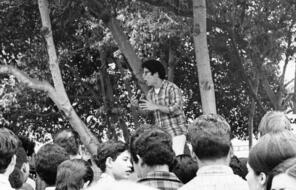
California Grape Workers’ Strike: 1965–66
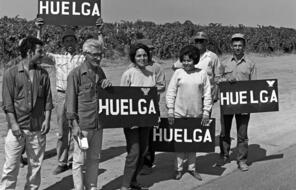
#IfTheyGunnedMeDown
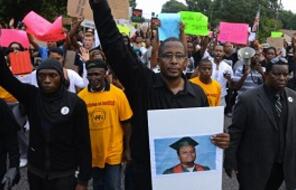
The Impact of Identity

The Power of Images
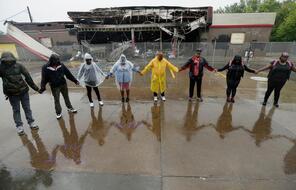
Preparing Students for Difficult Conversations

Social Media and Ferguson

10 Questions for the Past: The 1963 Chicago Public Schools Boycott
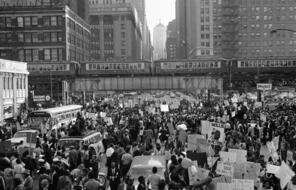
The Importance of a Free Press
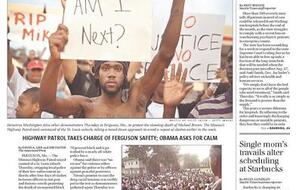
Citizen Watchdogs and the News

Confirmation and Other Biases

Hands Up, Don't Shoot!


